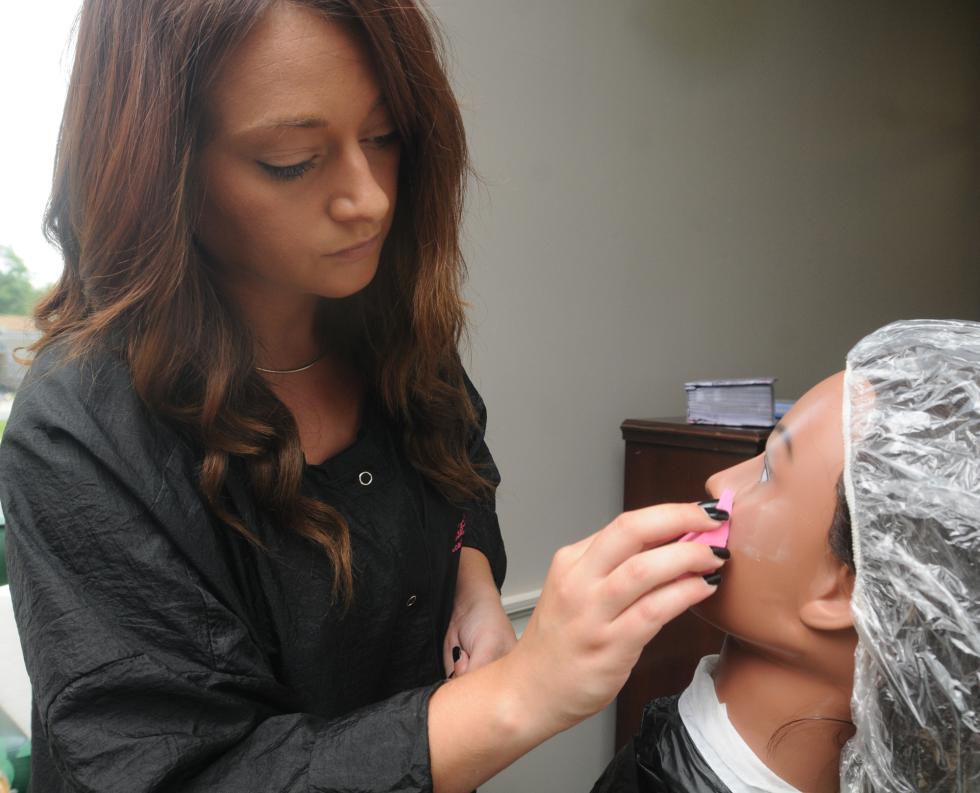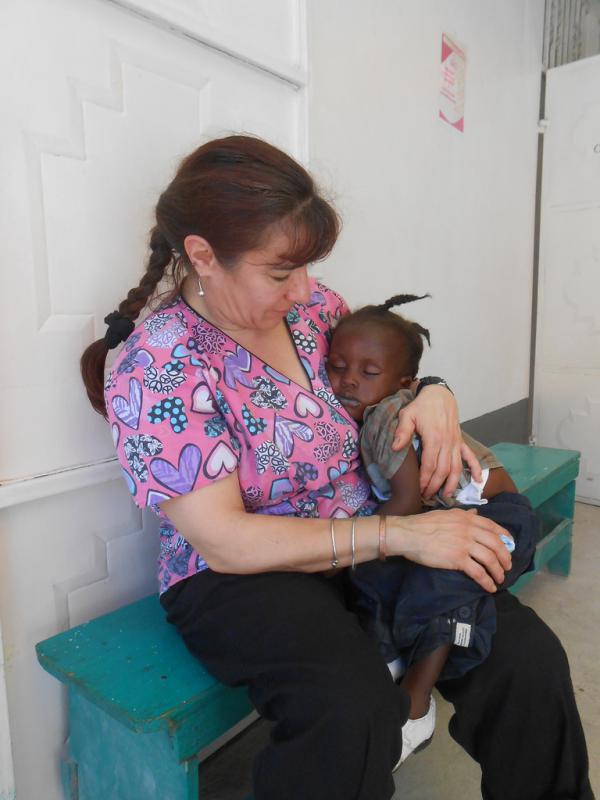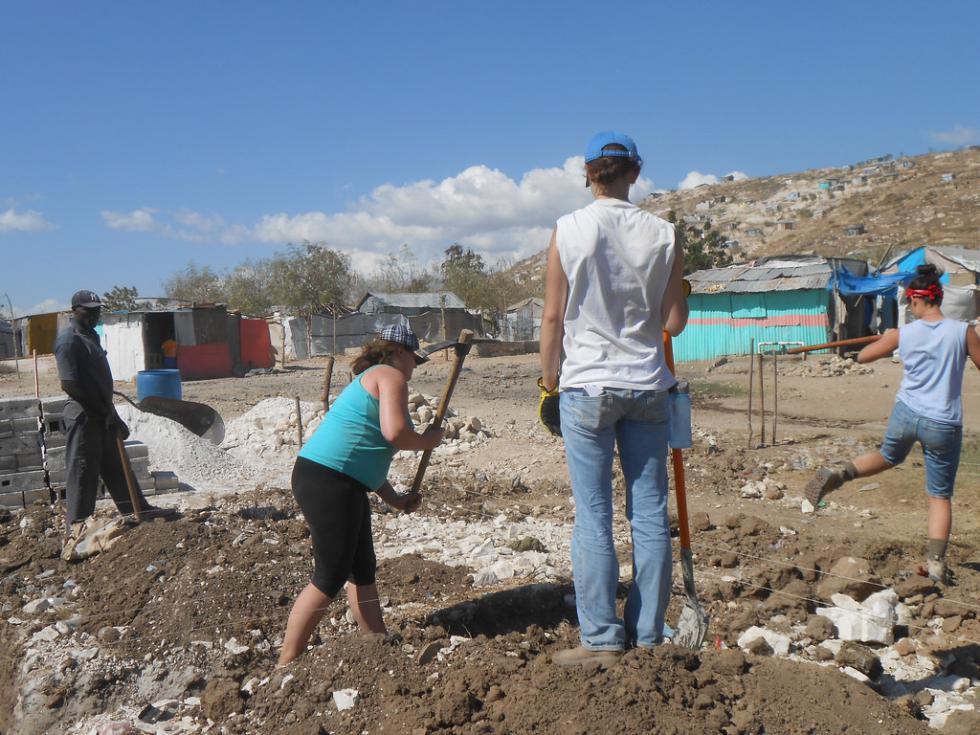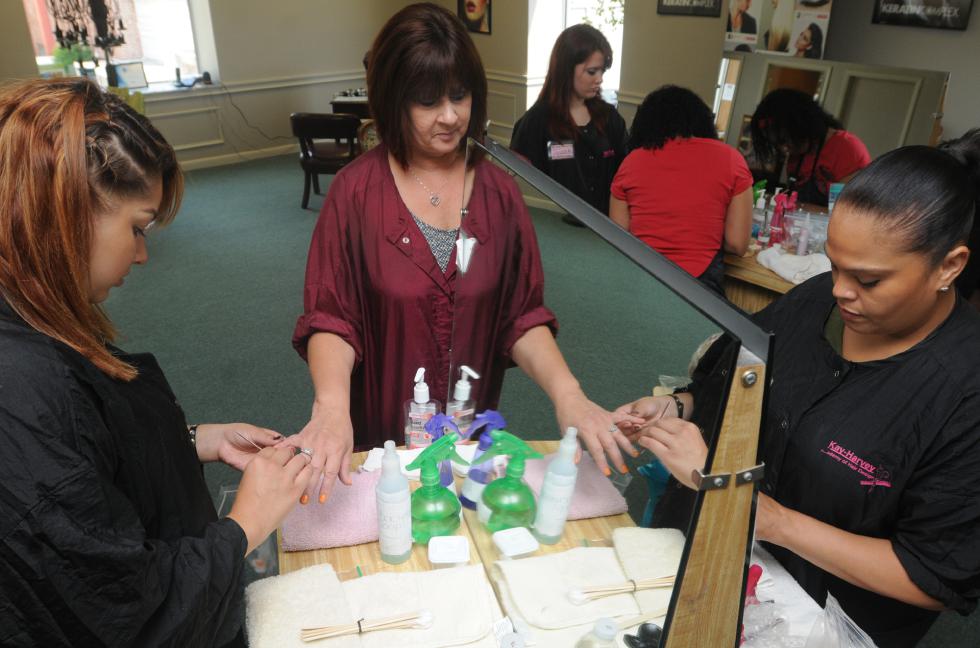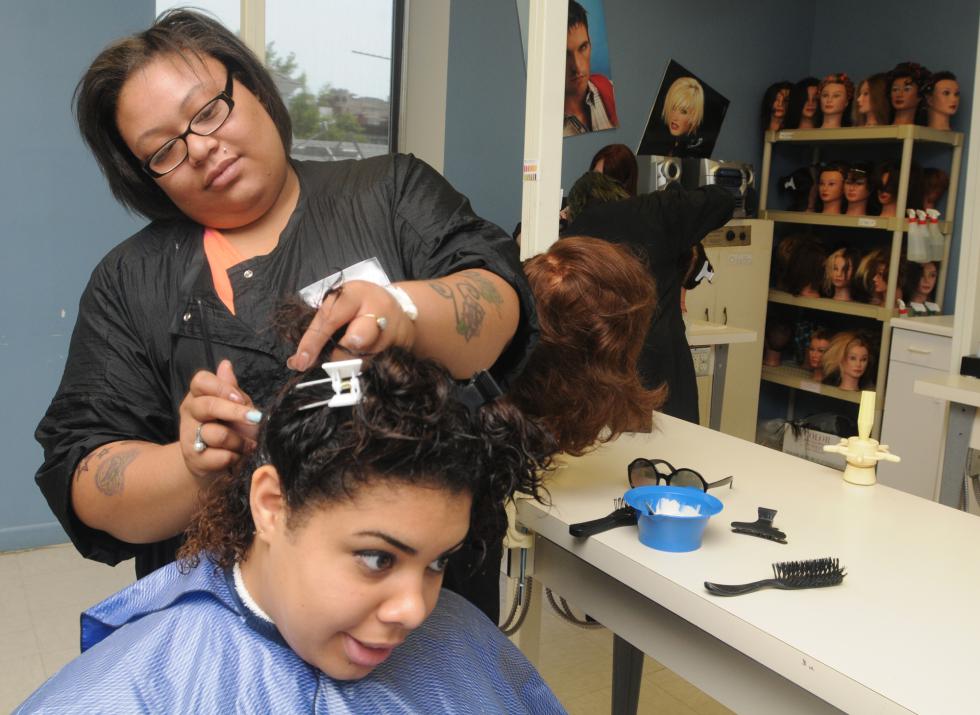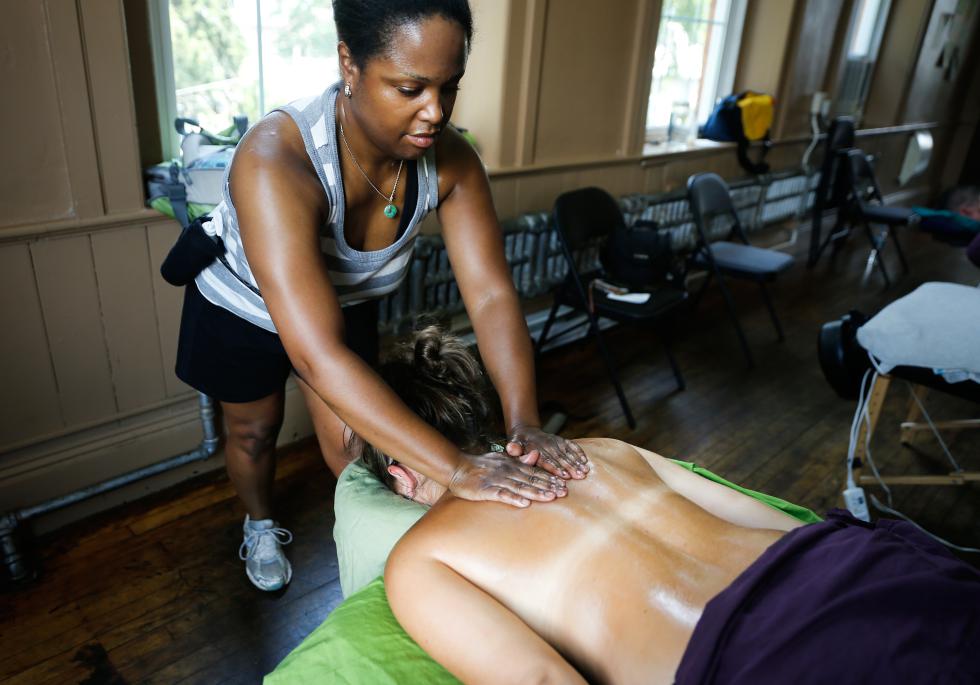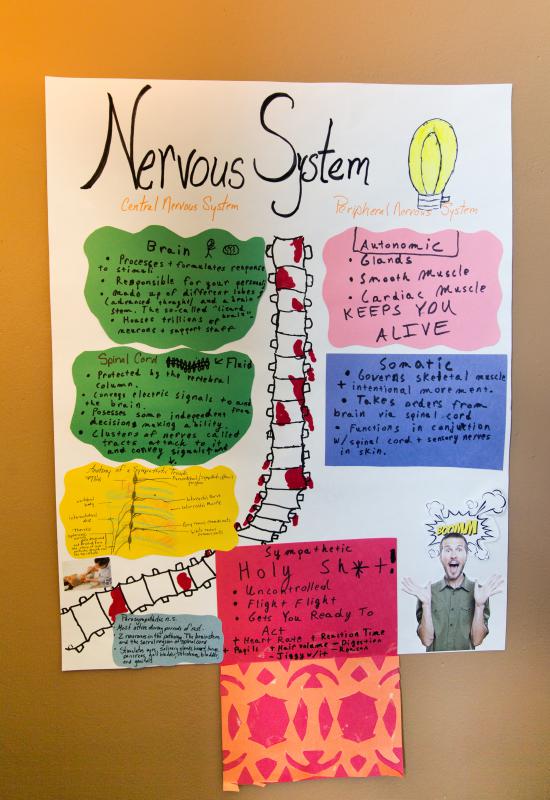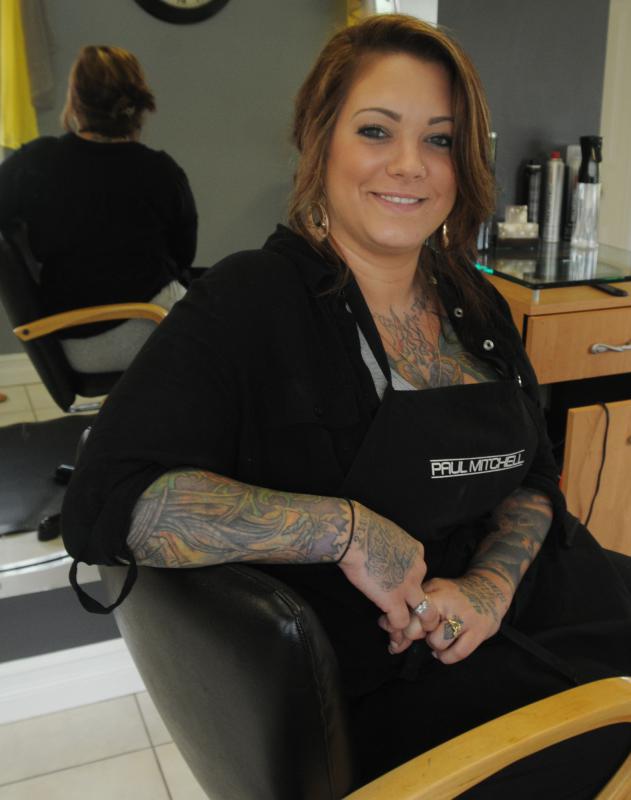Somewhere between climate change, the recession, and an ever-burgeoning Internet universe, the professional landscape changed a lot over the past decade. Naturally, we the worker bees can only scramble to keep up.
Hit by the Great Recession, some baby boomers are finding their retirement funds depleted while they’re still supporting children struggling to find steady employment — an environment that for many has led to a second-chance at a new career. Encore careers — second, third, or even fourth careers — are on the rise. According to an Encore.org survey, 4.5 million people in the U.S. between the ages of 50 and 70 are starting new careers. And with the Valley’s educational bounty, this is the perfect place to make that happen.
At Home on the Range
Beth Ann Ortiz, 53, says she always felt called to help vulnerable, impoverished populations, but traveling to Haiti with her peers in the Greenfield Community College nursing program solidified things. While on the 10-day trip through the community college’s service learning program — which integrates community service and instruction — she and the other nursing students helped in one of Port Au Prince’s clinics. And when she wasn’t doing that, she helped the community dig foundations for new homes to replace those that the 2010 earthquake destroyed.
“I think people up here [in the U.S.] think that everything’s okay, but it’s really not,” Ortiz says, referencing the devastation she witnessed while there in January 2014. “People are still without water and electricity.”
The experience, says Ortiz, reaffirmed her desire to lend a hand to those parts of the world most in need. After earning her associate’s degree in nursing through GCC’s two-year program, Ortiz considered traveling to far-off locales, but says she soon realized there’s plenty of need in the U.S. So, the longtime Brattleboro resident traded the funky arts town for Chinle, Arizona — the heart of Navajo Nation. Ortiz says her Cherokee heritage has always compelled her to serve Native American communities, and her brother lives in Arizona. In fall 2014 she packed up her house, piled up her car, and drove southwest. She now works at Chinle Hospital as a Registered Nurse.
At first, she says, she was incredibly homesick for New England — especially for trees. “I cried, missing my trees,” she says, recalling how barren the red rock landscape felt to her. But after digging into her job and exploring the surrounding canyons, Ortiz came to feel at home. Plus, she says, the Navajo people are very accepting and welcomed her into their community.
Becoming a nurse was an abrupt career change for Ortiz. She had spent most of her working years in Brattleboro’s service industry. Stints at T.J. Buckley’s and Mocha Joe’s — along with a longstanding baking business she ran out of her home kitchen — allowed her a flexible schedule that fit her life as a single mother. As her son got older, however, she started taking classes again and thinking about the next phase of her life.
“I wanted to give back to the world in a different kind of way,” Ortiz says.
Her life now moves at a much different pace. Ortiz says every department in the 60-bed hospital she works at is understaffed by at least three positions. As government-run hospitals like Chinle clash with tribal leaders, a lack of job security keeps holes in the schedule. Increasingly, more of the Navajo Nation’s hospitals are filing for tribal control, which severs the hospitals’ ties to the U.S. government. This means, Ortiz says, that the doctors and nurses lose their government pensions if they don’t leave for a job elsewhere. Plus, she says, the community is so remote that hospital staffers have to drive two hours to go grocery shopping.
“These hospitals are scrambling to keep doctors and keep nurses and keep quality people,” says Ortiz. “It’s unfortunate because it’s at the expense of the patient.” Ortiz says she enjoys working within the Native American community, though eventualy she’ll probably transfer to a post “somewhere closer to civilization.”
“It’s a quiet setup,” she says. “A home on the range kind of thing.”
Strictly Beautiful
“If they’re not up here in three minutes I’m starting without them,” calls “Ms. Nancy” Booth, Kay Harvey Hairdressing Academy’s director and proctor for today’s mock state board exam.
“Five. Four. Three. Two. One.” As she calls the numbers, three girls scurry up the stairs slowly, lugging their duffle bags full of beauty tools. Nancy orders them to disinfect their stations and the test begins with a facial. She reminds them the exam must be silent.
“They’ll ask you to pack up and go home,” she says, referring to the state proctors who stand between the students and their licenses to practice cosmetology.
Just beyond where the students take their exam sits something that looks like an old-fashioned dentist chair — metal with lime green cushions — with Medusa’s head hanging over it. The students move silently through each task and the crinkle chorus of the many Zip-loc bags holding all their treatments and solutions fills the void.
The West Springfield-based school boasts a 91 percent success rate among graduates taking the state boards. Students participate in mock state board exams after they’ve completed 1,000 hours of practice, which takes roughly a year. Students in the beginners class across the hall practice scalp treatments on mannequins as well as on each other. Intermediate students practice their craft on people who pay a discounted rate for the novice services. On the day I’m there, an elderly lady in the downstairs salon is sitting in a chair getting a perm. She swears by Kay Harvey’s quality and prices. “I’ve been coming here for years. You can’t beat it.” One of the instructors, “Ms. Helen” Kostas, pins down the woman’s curlers, explaining to student Tamara Kelly that you have to do that for people with thinner hair. “Hey!” the client interjects. “I’m lucky I have hair at all!”
Here, Sabrina Geraghty, 26, learned the foundations for the career she loves. After a career in tattooing fizzled and a job as a dental receptionist didn’t pan out, Geraghty turned to the creative outlet she’s always had a knack for: hair.
Geraghty says she knew cosmetology would be a good fit for her, but still she was skittish heading in. Wanting more for herself and her young son pushed her to stick it out.
“I knew I’d be good at it,” says Geraghty. “I was a little nervous because I’m shy, but even in the first few months I opened up a lot and my creativity came out.” Geraghty now works at Finishing Touch in South Hadley and is creating a career as a color expert. Salon owner Shelley Conti says Geraghty is drumming up a “crazy, colorful” clientele the salon didn’t have before.
“I love it,” Geraghty says. “I love making people feel great about themselves, being creative.”
The Shift
Students at The Massage School in Easthampton say it’s more than a program — it’s a lifestyle.
Bryana Worthy, 43, says she started going to the school to learn to help others, so didn’t expect the school would have such an impact on her own health.
“There’s a certain amount of attention you have to pay to yourself,” Worthy says at a Wednesday student clinic, during which students offer one-hours massages for $30. “You have to practice what you preach.”
Lying on Worthy’s table, I get a heavenly sample of what the school is about. Following the massage I feel like I’m floating. Co-owner Valerie Hood sees my smiley, squinty face.
“We call that massage high,” she laughs.
Hood and Alexei Levine started the school in 2001. They set out, they say, to make “this education more accessible and affordable.” Hood and Levine, massage therapists themselves — Levine is also a physical therapist and serves on the state’s massage therapy board — help teach the school’s courses. Levine says they’re able to keep their tuition down by not taking much salary themselves. To ensure their own financial security, the two have a school in Boston, and are planning to open another one in Minnesota, where Levine grew up.
Jenny New, a licensed lawyer looking for something different, is nearly finished with the program. “This is kind of my way of approaching retirement,” says New, 59. After she finishes, she says, she’d like to work with people in hospice.
“I came in for a massage and said, ‘I can see myself here,’” she says. “I really believe in the health benefits. It was great to do that head work for most of my life, but now I want to work with my hands.”
Donna Witmer, 53, graduated from the school 12 years ago and has been an instructor there for four years. One of the classes she teaches is aimed at getting students into the business mindset so they’re able to run their own practices after graduation. Her practice in Hadley focuses on functional healing after injuries. She says just because the school churns out so many massage therapists doesn’t mean they’re all fighting over clients. There’s plenty to go around with a bit of strategy.
“Many grads find work because we try to focus on finding your own unique slice of the market,” Witmer says.
Witmer was working as an interior designer and had two young children when she started the program at The Massage School. The classes take place on evenings and weekends in an effort to make them accessible to people with children and jobs. Witmer says she decided to change careers when she felt the recession hit and wanted to live a healthier lifestyle.
“I felt the shift and also had a kink in my neck from drafting, so I was getting chiropractic work, which directed my attention to my muscles,” says Witmer. “I started reading and I just got really interested in it, and at the same time saw an ad for The Massage School.”
It wasn’t always easy to be a working single mom going to school, Witmer says, but it was only a year and she knew it’d be worth it. She says the change in career helped her get out of her head and into her body, while providing enough income to put her children through college.
“I feel like it made a lot of things possible for me,”she says.•
Contact Amanda Drane at adrane@valleyadvocate.com.

